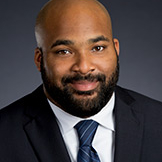Below is a list of research related to attendance

The reports on this page are listed chronologically and examine the issue of chronic absence nationwide and in selected communities. Use the search box to find research using the first few words of the paper title. See the early education, elementary, secondary and other research categories on the right. To submit new research, please contact us.
Present, Engaged & Accounted For: The Critical Importance of Addressing Chronic Absence in the Early Grades
Chang, Hedy and Mariajose Romero. National Center for Children in Poverty: NY: NY, September 2008. This report documents the consequences, prevalence, potential causes and possible solutions to children missing extended periods of school in grades K-3rd. Although students must be present and engaged to learn, thousands of this country’s youngest students are academically at-risk because of extended absences when they…
Predictors of Educational Attainment in the Chicago Longitudinal Study
Ou, Suh-Ruu and Arthur Reynolds. School Psychology Quarterly, v. 23, no. 2, p. 199-229, 2008. This study attempts to determine the graduation likelihood of a sample of 12-year-old students in the Chicago area who were at risk of not completing school due to poverty. Several variables, including number of absences, were significant predictors of high school completion. Absences across the…
Promoting Improved Oral Health: Legislator Policy Brief
Healthy States Initiative, Council of State Governments, June 2008. This policy brief addresses the impact of oral diseases among children and adults. Among school-age children (5 to 17), tooth decay is the most common chronic disease — five times more prevalent than asthma and seven times more prevalent than hay fever. Children lose approximately 50 million school hours each year…
Lost Days: Patterns and Levels of Chronic Absence Among Baltimore City Public School Students 1999-00 to 2005-06
Baltimore Education Research Consortium, Spring 2008. This brief reveals that chronic absenteeism presents a significant challenge to classroom instruction and learning rates in the primary grades (1st – 5th) in Baltimore City Schools. Roughly a third of students in the first grade cohort were chronically absent at least once during their first five years. By the early secondary grades (6th…
Preventing Student Disengagement and Keeping Students on the Graduation Path in Urban Middle-Grades Schools: Early Identification and Effective Interventions,
Balfanz, Robert, Lisa Herzog and Douglas J. Mac Iver. Educational Psychologist, 42(4), 223–235 Copyright 2007, Lawrence Erlbaum Associates, Inc. In this study of the freshman year of high school, researchers found that attendance in this pivotal transition year was a key indicator of whether students would finish high school. The study also found attendance and studying more predictive of dropout…
A National Portrait of Chronic Absenteeism in the Early Grades
Romero, Mariajose and Young-Sun Lee. National Center for Children in Poverty, Columbia University. October 2007. This brief reveals a significant level of absenteeism in the early school years, especially among low-income children, and confirms its detrimental effects on school success by examining children from across various incomes and race/ethnicity groups in a nationally representative sample of children entering kindergarten. Early…
The relationship between relative weight and school attendance
Geier, Andrew B. Obesity, Vol. 15 No. 8. August, 2007. This study examined the association between relative weight and absenteeism in 1,069 fourth to sixth graders from nine public schools in an urban area. The researchers found that obese children were absent significantly more than the normal weight children. Several possible reasons for lower attendance are social difficulties and behavior…